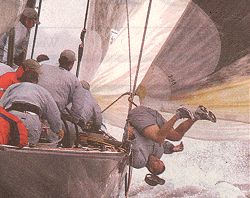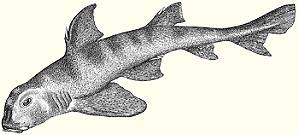

An Occasional Publication for the Home Boat Builder
Glen-L Marine Designs - 9152 Rosecrans Ave. - Bellflower, CA 90706

In this issue
- The Riviera Frame Kit is here!
- Featured Design: V-Drive boats
- Inboard Hardware: V-Drives
- Feedback: Tornado by Paul Miller
- Scarfing with a Router by Ken Schott
- Darla's corner
- Feedback: Monaco by John Gondek
- Unique project sets sail by George Bassler
- Recent email
GLEN-L Update
- Web site:
- This is a troubled time in the history of our country and this weekend is a
good time to think about the values that make us who we are. These values
should not be sacrificed to solve transient problems. Being a patriot means
coming together in times of trial to defend our values, it means making our
voices heard when these ideals are threatened from without or within...
It's also a time to enjoy our family. We hope everyone of you have a happy 4th of July. At Glen-L, we will be having a pot-luck at the "pond" with family and friends. - Galvanized fastenings kits: As of the first of June, we have started to phase out our hot-dipped galvanized Fastening Kits. It has become more and more difficult to find the basic steel screws. Most "wood screws" that we are offered are in fact, sheet metal screws. We will continue to offer galvanized kits as long as we have the fastenings, but some sizes may run out before others. If we are unable to ship a complete fastening kit, we will notify the purchaser before shipping. We will continue to offer silicon bronze Fastening Kits. These have always been superior to the less expensive galvanized kits.
- CS-20 update: It is unlikely that this design will be available before the end of July. A sudden rush of Frame Kit orders has meant that our proofreaders have not had time to check the plans, patterns and instructions. If you would like to be notified when the plans are available, send an email with the subject "CS-20" and Gayle will put you on the notification list.
- Riviera Frame Kit... it's here! See the details in this WebLetter.
- Have you visited the Boatbuilder Connection lately? There are some really knowledgeable people who regularly visit this forum. They are ready to answer questions about boat motors, building materials, sailing, paddling and all things nautical or etymological. Many of the discussions are just fun to read. Drop by, you can participate without signing up or divulging any personal information.
- This issue of the WebLetter features the V-Drive boats. The next featured designs will be the Gypsy, Quest, and Delta Q. If you have photos or feedback on these designs, I hope you will share them with our readers. A reminder: This section is in response to reader requests. I will try to present as wide an array of designs as possible, attempting to add additional information from what is currently on the site, which can be difficult without your input.
- Thanks to Paul Miller, Ken Schott, John Gondek and all the others who contributed to this WebLetter. I couldn't do this without you.
- This is a troubled time in the history of our country and this weekend is a
good time to think about the values that make us who we are. These values
should not be sacrificed to solve transient problems. Being a patriot means
coming together in times of trial to defend our values, it means making our
voices heard when these ideals are threatened from without or within...
Editor
The Riviera Frame Kit is here!
To all of you who have asked about a Riviera Frame Kit, it's finally here!
The Riviera Frame Kit has been the most requested of all designs for which a Frame Kit is not available. It came in at slightly less than we estimated, and will sell for $1403.16.
The preliminary run is limited, so if you are one of those on the waiting list, we suggest you not wait if you are ready to start.
Featured Design: V-Drive boats
In the heyday of V-drive boats, they were the BIG boys of drag racing and breath-stopping pleasure boating. They were the fastest, the sexiest, and the dream boat of anyone interested in speed. Lots of money was spent on chrome, tuck and roll upholstery and flambouyant paint jobs. They looked fast!
At Glen-L, the Thunderbolt and Tornado were the most popular ski/speed boats. Both designs were being raced around the world. In South Africa, a Tornado was beating all comers, but even at 105 mph, it didn't always win. Since it was the only boat that was capable of that kind of speed, it was given a handicap, and was often "beaten" by much slower boats.
In Australia, the Pearson brothers held several gold cups, won with their Glen-L Thunderbolt. This was a time of muscle cars and hot boats. Over the past year we have been getting more inquiries about these designs; they may be "the next big thing".
Frame Kits are available for the Thunderbolt, Tornado and Hot Rod, which will give you a good start if you want to build your own classic V-drive boat.
Links:
WebLetter
54: Missile
WebLetter
10: Building the Thunderbolt
WebLetter 9:
Thunderbolt
Thunderbolt photos
WebLetter
47: Tornado Feedback
Tornado Photos
WebLetter 58: Dragster
WebLetter
53: Evolution of the V-drive hull
WebLetter 3:
V-drive, What is a V-drive/parts in a typical installation
Cover girls
Inboard Hardware: V-Drives
The following is taken from Inboard Motor Installations.
A V-drive enables the motor to be mounted at the
stern of the boat and still drive through a conventional straight line shaft
arrangement as with the centrally located motor. In effect, the V-drive is a
transfer case that changes the direction of the engine shaft to the opposite
![]() direction. In certain types of boats, the v-drive offers several advantages. In
many cases, the V-drive will allow a decrease in the shaft angle to a greater
degree than if the motor were straight coupled and more centrally located. In a
cabin type boat, the stern mounted motor isolates noise and fumes to the aft
end of the boat. The engine can be set into the hull to better advantage since
it does not have to be parallel with the drive shaft unless of the
close-coupled type. Exhaust lines can be much shorter, also. Finally, moving
the motor to the stern in certain types of boats can improve speed and
performance.
direction. In certain types of boats, the v-drive offers several advantages. In
many cases, the V-drive will allow a decrease in the shaft angle to a greater
degree than if the motor were straight coupled and more centrally located. In a
cabin type boat, the stern mounted motor isolates noise and fumes to the aft
end of the boat. The engine can be set into the hull to better advantage since
it does not have to be parallel with the drive shaft unless of the
close-coupled type. Exhaust lines can be much shorter, also. Finally, moving
the motor to the stern in certain types of boats can improve speed and
performance.
Note however, that not ALL inboard boats can have a stern mounted motor. There must be sufficient buoyancy at the stern to support the weight of the motor and gear so that the boat will trim level with the waterline. Basically, any boat specifically intended for a centrally mounted inboard motor should not be adapted to a stern mounted engine location except on the advice of a qualified naval architect or the manufacturer of the boat. While such modifications can and have been made, the results may be questionable and experience indicates that there have been numerous mistakes made with such modifications that could detract from the value of the boat, not to mention the performance.
Plate 5: Drawing showing a V-drive installation in a runabout. Note that the angularity on either side of the universal joint should not exceed 12 degrees.
Feedback: Tornado
by Paul Miller
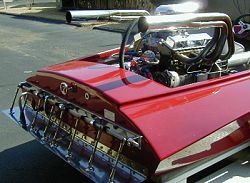
Thanks for your interest in my boat. What I can share follows:
- Boat: Glen-L "Tornado"
- Power: 406 Cu. In. small-block Chevrolet
- Driveline: Chevrolet Powerglide transmission; Casale 10 degree v-drive 1:1.15 overdrive; 1" aquamet-22 shafting set at 9 degree shaft angle; two-blade Ron Hill propeller, 11-3/8" X 16"
- Max speed: unknown, but plenty fast!
- Builder: Paul Miller, Germantown, TN
- Profession: Quality Assurance executive manager
The plans were purchased in August 1987; the first frames cut and assembled in September 1987; the last coat of paint was applied in March 2003; the driveline and rigging was completed in September 2003 (that's right, more than sixteen years in the doing).
Throughout the boat-building process I always answered the commonly-asked question, "When are you going to finish it?" with a vague answer, usually along the lines of, "I'm not on a timetable" or "The building process is the most fun so I'm making it last." The reality is that I never have been on a schedule to complete this boat. There were many years when all I did was think about it, not actually do anything with it. Of course, I was busy raising a family, completing a second education and developing a career as a Quality Management professional during those "slack" times. One thing I did, however, is to stay connected with the boat. I would sometimes just sit in the shop and rub my hands over the formed panels just to "stay in tune with it."
Does that sound "corny?" If it does, then you don't have the boat-building bug. Like many things, if I have to explain it you'll never understand.
My interpretation of the Glen-L Tornado is built to specification with only one or two exceptions. I did omit the center cockpit beam and mid-section decking. This allowed me to open up the cockpit for an approximate 20% increase in space. Instead of two layers of 1/4" ply on the bottom and one of 3/8" on the sides I used doubled 1/4" plywood on both bottom and sides. This resulted in one additional pair of "transition joints" at the forward end of the side-to-bottom junction. Needless to say, I became fairly proficient at hand-sculpting plywood edges.
When rigging the Tornado, I hand-crafted much of the cavitation plate hardware. I used Bergeron Engineering pads and turnbuckles; the plates are hand made of 0.125" stainless steel; the plate adjustment is accomplished electrically with a 4"-stroke linear actuator controlled from the helm.
The SBC 406 is assembled from race-quality parts commonly used in circle-track modified cars. These cars make power from very high revolutions (albeit for short periods of time - but longer than a drag racer). I set the clearances up a little loose for marine application. Ignition fire comes from a new Vertex magneto to simplify the ignition. A single Holley 750cfm "double pumper" provides the air-fuel mixture. The Hilborn-style scoop is decoration only. A USCG-approved flame arrestor sits inside the scoop. All of the engine and lighting electrical switches are mounted on a Cheetah drag-racing shifter console. The shifter is mated to a reverse-valve-body Powerglide transmission. The transmission is a "bracket race" style from TCI complete with lock-up. This feature has been disabled, however as it's pointless in a boat. Bassett wet headers are installed, complete with sound baffles to keep the water cops happy.
I regret not taking more pictures during the building process, but some of the completed boat are included. Thanks for your interest and thanks for keeping Glen-L marine designs alive and available. I have catalogs from 25 years ago that I still enjoy reviewing!
Scarfing with a Routerby Ken SchottThere are various means to get a good scarf joint. The scarf sled is mentioned in WebLetter 18. I could not use the scarf sled for the width lumber required, with my table saw. Here I will describe a method to scarf with a router... |

Darla's corner
by Darla Schooler
I welcome your contributions
![]()
smith-er-eens: pl.n.: Etymology: Perhaps from Irish
smidiríní
Fragments or splintered pieces; bits: "The fragile dish broke into
smithereens."
cygnet: n : 1. a young swan, 2. a boat built by Dan O'Connor
![]()
![]()
Feedback: Monaco
by John Gondek
I started construction on a revised version of the Monaco in Nov 02. I increased the height of the boat (sheer line) 3 in. to obtain additional engine space and I also decreased the height of the motor stringers 1 1/2 in. which resulted in 4 1/2 in. additional hull depth from deck to stringers enabling flat carpeted floors.
Construction was completed in June 03 except for flooring and finished seats. Dash and interior, as well as ribs and entire frame, is constructed of American elm with solid mahogany and marine mahogany plywood on the exterior. The boat is powered by a modified Mercruiser 302 Ford with top speeds in excess of 60MPH. The motor was repositioned 9 in. further Aft which provides very comfortable operation at all speeds.
Feel free to Contact me, with any questions. (see the Project Registry)
The following was sent to us by Don Gerlach. The article describes the building of the L Gato catamaran sailboat, with electric motor. The article appeared in the Press & Sun Bulletin, 20 June 2004.
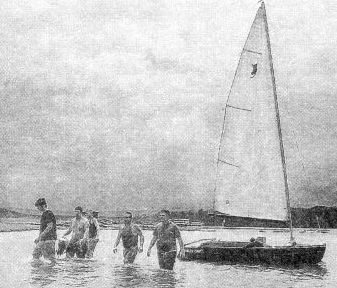
Photos by CHUCK HAUPT / Press & Sun Bulletin Susquehanna Valley High School students and Engineering and Development teacher Donald Gerlach, second from right, got Saber Cat 2, a 12-foot catamaran they built, ready for sailing Friday after launching at Dorchester Park on the Whitney Point Reservoir. |
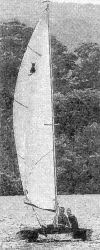
Susquehanna Valley High School's Engineering Design and Development teacher Donald Gerlach, left, and student Chris Cook, 18, sail Friday at the Whitney Point Reservoir in the catamaran the class built. |
Unique project lets class set sail
SV students build solar-powered, 12-foot catamaran By GEORGE BASLER Press & Sun-Bulletin
WHITNEY POINT- When he saw the plans spread out on work benches in
the technology classroom at Susquehanna Valley High School, Ken Everling had
one thought.
"It was a little overwhelming," the
18-year-old senior said.
That was in January.
On Friday, after six months of hard work,
Everling and his 12 classmates stood in the Whitney Point Reservoir at
Dorchester Park to pour a bottle of sparkling grape juice on their creation,
the Saber Cat 2.
The students built the solar-powered catamaran in
their engineering design and development class at Susquehanna Valley High
School.
"It was the best thing I've ever done in
high school because we built it," Everling said.
The class originally planned to build a 16-loot
catamaran using a Glen-L. design, but later chose a 12-foot version.
The students modified the basic design,
incorporating an electric drive system powered by the sun. They added a solar
panel on each hull, an electric motor in the cockpit and a 12-volt deep-cycle
battery charged by the solar panels.
"They took on a hell of a big project,"
said Donald Gerlach, teacher of the class, which is a capstone course for
Project Lead the Way, a pre-engineering curriculum.
Students do the project to demonstrate hands-on application of what they've
learned. "It teaches the kids to take design and theory and actually do
something with it." Gerlach said.
In addition to technical skills, students said
they learned the importance of discussion, patience and trusting their peers.
They worked in teams of two or three to accomplish certain jobs.
"I knew it was going to be a challenge," said Scott Mastin, 17, a
senior. "I knew it would make us work as a team and understand each other
more."
Thousands of hours of work went into the project,
Gerlach said. The boat is made out of mahogany, fiberglass and sweat - lots of
sweat, he added.
Money for the project came from a $3,200 grant from the Tech Prep program of
Broome and Tioga counties, Gerlach said.
While Friday marked the official launch of Saber
Cat 2, students had taken the boat out twice before, once to test the sailing,
and once to check the electrical system. They knew the boat wouldn't sink,
the students joked.
Still, they had to cope with a last-minute
emergency Friday when the tiller arm broke, meaning the catamaran couldn't
be steered. The students used Gerlach's toolbox to make repairs by screwing
on backing plates.
"They've learned a lot of problem
solving," Gerlach said.
For now, the Sabre Cat 2 will be stored at SV
High.
"It took a lot of wood putty," said
senior Joe DePersiis, 18. "It's all about patience and working
together effectively."
Feedback: Tubby Tug
by Dan O'Connor
6 Jun 2004
Yesterday I completed "Tubby Tug" after 6 months and an estimated 400 hours. My version is electric powered with an MinnKota trolling motor modified to fit through the hull and under the back seat. The electric controls were re-routed to a "throttle" at the helm station. A modified Teleflex rotary helm provides steering using the spoked wood wheel. The dash configuration includes a voltmeter, speedometer (10 mph max electric trolling unit), and lighted electric panel that controls the running lights, cabin lights, plus a horn and accessory plug. The second button was my 8 year old grandson's idea. It turns on a Flojet pump mounted in the front compartment, plumbed to a thru hull. Our "water cannon" can fire a stream of water about 40 feet!
The cabin design was slightly modified to get avoid the center post. All brightwork is mahogany. My state registration numbers have not yet arrived, but "Cygnet" will be christened on Thursday, June 10th, on Swan Lake near Portage, Wisconsin.
27 June 2004
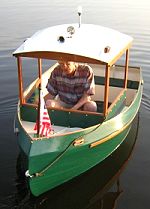
"Cygnet" floats. I was very surprised at the stability and balance. Attached are a couple of on the water pictures. With two adults I can make almost 5mph with the 27# thrust MinnKota. Two adults can ride in relative comfort and it sure does turn heads at the lake.
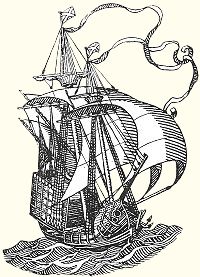
Recent email:
Subject: Missile
Date: Tue, 29 Jun 2004
Missile, Nick Larson, 6-29-04, I'm 21 years old and have aquired a 1962 missile. It had a blown engine, a bent prop shaft, and a trailer that was pretty badly beaten up. I have just recently rebuilt the chevy 350, replaced the prop shaft with a new one and fixed the trailer enough to be road worthy. I took it out on the lake last week and had the time of my life. Now since it's running good, I will be restoring the exterior and interior.
Subject: Re: Riviera Frame Kit
Date: Tue, 29 Jun 2004
Gayle: Thanks... will be ordering soon!!
Still having a BLAST with our Squirt, "Post Man". Every Marine Patrol and Sheriff who
has stopped us, tells us it's the sweetest boat on the Indian River... NOT
to inspect the boat, but to ask how old is it, how fast does it go, etc, etc. I
ask them if they would like to see my safety inspection tag and all of them
have said, "NO we just wanted to see this thing up close, it's
beautiful". I would encourage everyone to get a complimentary safety
inspection by the Coast Guard.
Bob Weems
Subject: Gypsy
Date: 22 Jun 2004
Barry:
These pictures are of the Gypsy. I built this boat for lake boating. My wife and I would camp on the lake. I built this boat because it had walk around head room and a shallow draft. It has been the roomiest boat I have owned and a great boat for lakes and deltas. We went out several times with four couples aboard and had a great time.
John Hurd Roseville, CA
Date: Sun, 20 Jun 2004
Subject: Chessie Flyer
Barry:
I am re-submitting pictures of the Chessie Flyer which I built several years ago. I was looking for a lake boat with room for two adults and two children, that would allow them room for lake camping. The Flyer filled this bill. It seemed as if someone would come up and inquire about the boat wherever we went. We live in the Sacramento area and spent many weekends on Folsom Lake. Trailering this boat was easy due to the fact that it set so low on the trailer. I was able to go to Donner Lake, Oroville Lake, The Delta (picture of boat under sail), Martinez and Tomales Bay. I found I could sail up on the shore due to the 9 inch draft and push the boat back into deeper water easily (picture of boat on shore in Folsom). This design worked out well for me.
Sincerely,
John Hurd
Below is the result of your feedback form. It was submitted on Monday, June
14, 2004 at 12:29:23
---------------------------------------------------------------
name: Bob Richards
Comments: I was thinking about building one of your kits called the Rebel. How hard is it to build. I enjoy looking at your web site. It's real cool and easy to use. I hope you continue with the web site.
ANSWER: I do not know how to quantify difficulty. There are different methods for building boats. Plywood is one of the more user friendly methods that doesn't require any exotic tools. The Rebel is a real boat building project, using all the techniques on a smaller scale as are used in much larger boats. I usually say, if you can make kitchen cabinets, you can build a boat. Perseverance is more important than experience. I suggest that you put your question on the Boatbuilder Connection. There are many amateur builders who regularly visit and can give you first hand insight. Also contact builders in the Project Registry. brw
Below is the result of your feedback form. It was submitted on Thursday,
June 10, 2004 at 14:34:57
-----------------------------------------------------------------
name: Dave Palmer
Comments: Fife is well underway--80% finished ---and 80% to go! A fun
project! Can hardly wait to get done with it so I can start another!
Dave
GLEN-L boats, of course

